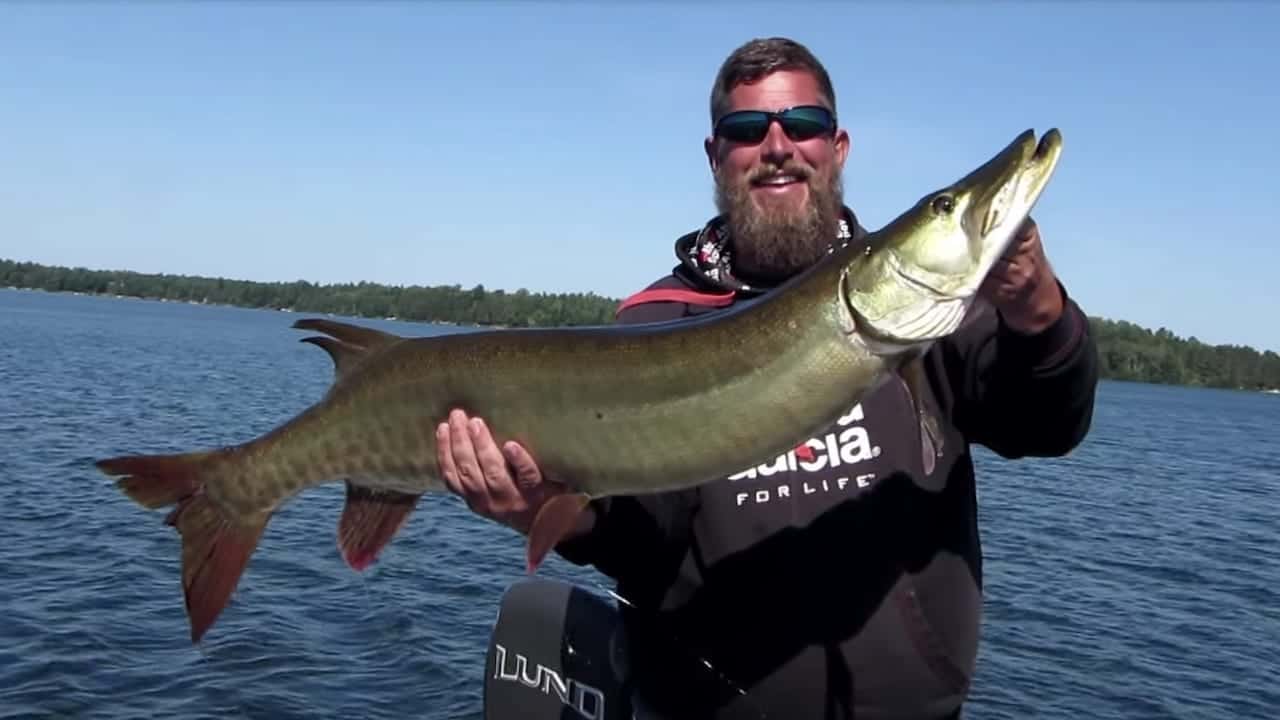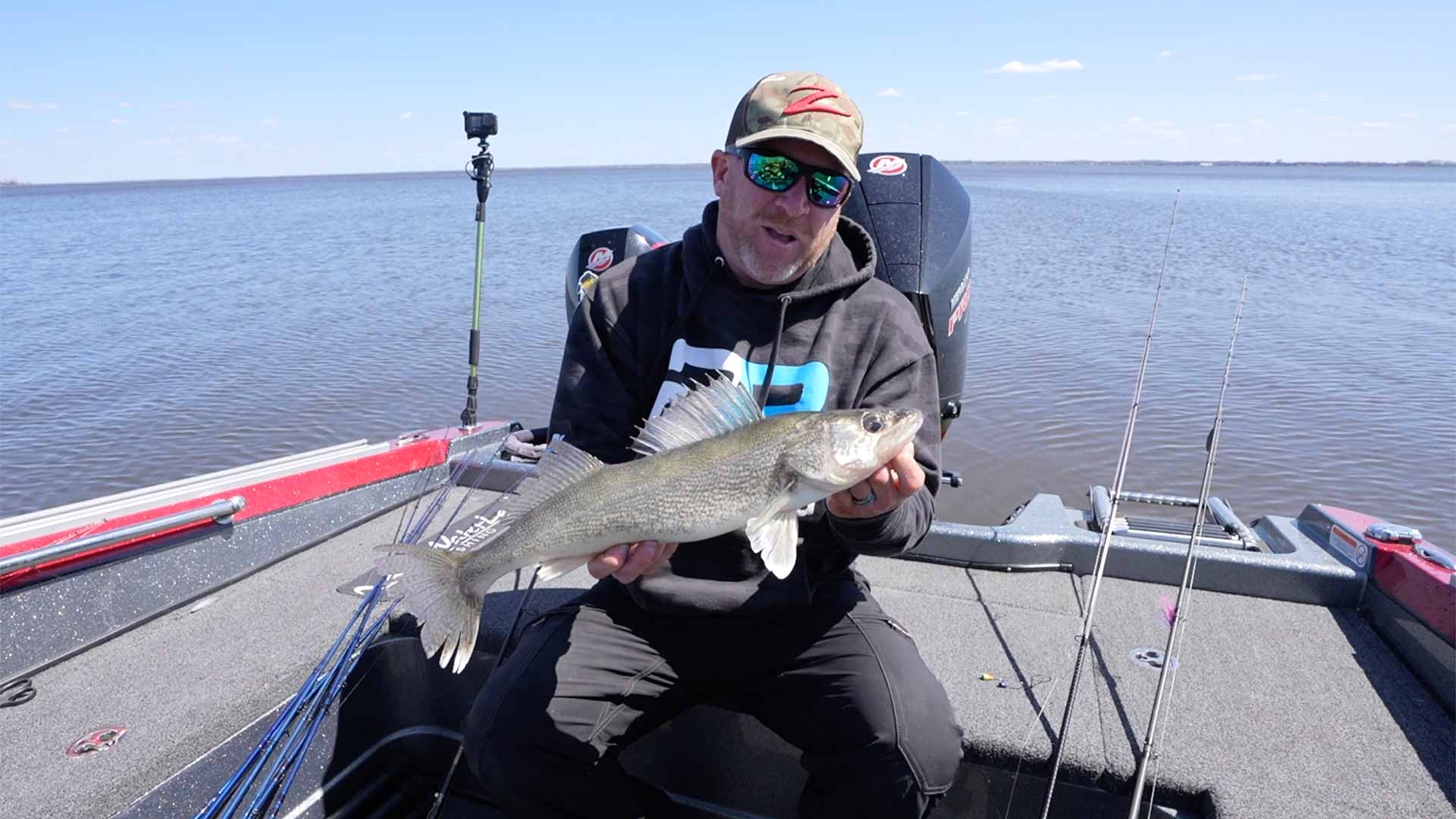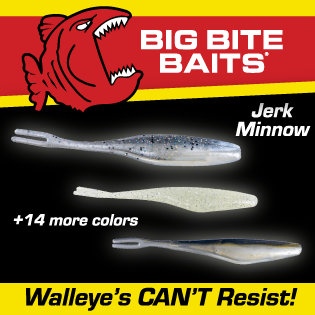Topwater Muskies
My grandfather fished the Chippewa Flowage in Wisconsin for muskies back in its glory days, seldom using anything but a topwater lure to enrage fish and make them strike. As a kid, I often dug through his basement to fondly examine his collection of Yellow Birds, Pflueger Globes, Surf-O-Renos, Mud Puppies, Creepers, Musky Jitterbugs and other magnum topwaters of the 1930s and 40s. Slightly smaller Zara Gossas–the forerunners of Zara Spooks–which he taught me to use for largemouth bass. I still recall his stories of rowing or using a 3 hp outboard to navigate “the Flowage’s” maze of flooded standing timber, casting and retrieving sputtering, gurgling surface lures along the way. Of mammoth fish seen, caught and lost–all contributing to the legend and lore of Northwoods muskie angling.

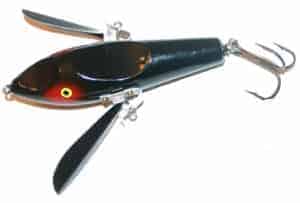
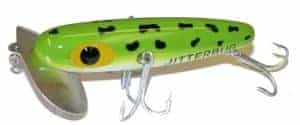
Today, most of that timber has eroded; yet the popularity and effectiveness of surface baits for muskies has not. The names may have changed–TopRaiders, Tally Wackers, Pacemakers and Hawg Wobblers; Giant Jackpots (basically a gigantic Zara Spook); Globesters (sounds familiar); Snap-Tails and Flaptails; Musky Buzzes and Surface Buzzers–most of which are considerably larger than the technology of the day permitted, back in the day, when lures were tossed on 4 1/2-foot tubular steel rods, Pflueger Supremes and black braided dacron line.

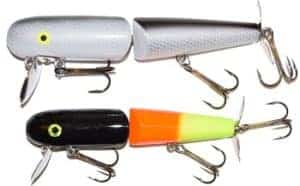
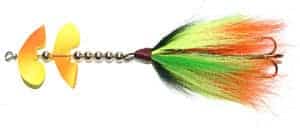
The point is, the tackle has evolved–to bigger lures; sharper hooks; heavier-duty, longer and more powerful rods; braided superlines and such. But the premise and practice of topwater fishing remains much the same.
Muskies, you see, have an eerie fondness for suspending near the surface; following surface-disturbing lures that resemble ducks, rats, muskrats, frogs, snakes, mice–whatever; and blasting them into oblivion–or missing them completely. Either way, the commotion and emotion are instantly off the charts.
Fact is, muskies are actually pretty good at nailing moving lures on the surface; northern pike ARE NOT. They look much the same, but for some reason, they operate differently. For every 20 surface strikes you get from pike, you might hook 2 or 3. With muskies, the percentage is way, way higher.
Topwater muskie lures work day and night, mostly in calm conditions. They attract attention through motion and commotion. Most of them run in relatively straight lines, making them easy for muskies to target, zero in on, overtake and chomp the daylights out of. Some–like walk-the-dog zig-zaggers–are a bit harder to catch, yet still quite provoking and effective. The nod goes to clear-water lakes under cloudy/rainy daytime conditions and at night, and murkier or stained waters during the day–like rivers and flowages.
Picture doing all of this during the day, when you can see and orient yourself to your surroundings. Now, imagine doing it under cover of darkness–a big-time producer of monster muskies across the Upper Midwest. Hopefully, a fish blasts it somewhere out there in the darkness, grabs it firmly between its teeth, and you get a good hookset.
And then…there’s the part of the story where Moby Dick leaps out of the water to grab your bait boatside as you lift it out of the water at the end of your cast. Frankly, there is no emotional preparation for this. Only the sudden shock to your senses. “We’re gonna need a bigger boat!”
There are certainly faster and more efficient ways to cover the water in search of muskies, locate fish, and trigger strikes. But just as certainly, there are no more exciting and terrifying ways to try to catch muskies. Especially big ones. During midsummer. At night.
Topwater muskies. It worked back then. It works just as well today. Some things never go out of style.
